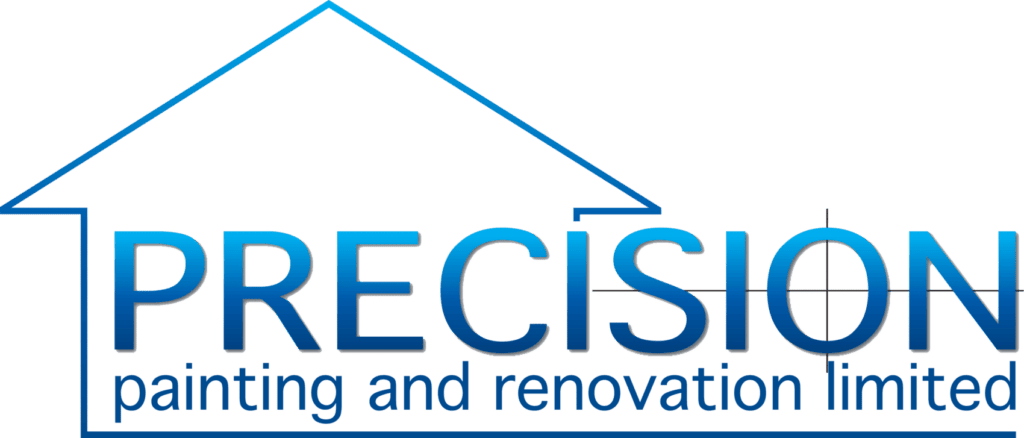Choosing the right paint is about much more than color or finish—it’s about protection, performance, and longevity. Homeowners and professionals who invest in quality coatings know that modern paints with UV protection offer a level of durability and brilliance that traditional paints simply can’t match. Whether you’re working with a Professional House Painting Service or tackling a project on your own, UV-resistant paints can dramatically influence how long your investment maintains its charm and structural integrity.
What Makes UV-Protective Paints Different?
UV-protective paints are formulated with advanced chemical additives that defend painted surfaces from ultraviolet radiation. When exposed to sunlight, standard paints gradually fade, chalk, or peel because UV rays break down the molecular bonds within the pigments and binders. UV-resistant formulations, however, incorporate light-stabilizing compounds that absorb or reflect harmful rays, preventing degradation at a molecular level.
This technology doesn’t only preserve color—it extends the lifespan of both interior and exterior coatings. Over time, that translates to fewer repaints, lower maintenance costs, and better long-term results.
Why UV Protection Matters for Painted Surfaces?
Sunlight is both a friend and a foe to any structure. While it brings natural warmth and brightness indoors, prolonged exposure to UV radiation is one of the main causes of surface deterioration. Paints without UV protection often lose their richness and gloss within a few seasons, leaving walls looking dull and weathered.
When paint breaks down under sunlight, it exposes underlying materials—wood, plaster, or masonry—to the elements, accelerating wear and tear. This can result in cracks, warping, or even moisture penetration. Paints enhanced with UV inhibitors act like a sunscreen for surfaces, safeguarding both the color and the material underneath.
Key Benefits of Modern UV-Protective Paints
1. Superior Color Retention
Colors often define the personality of a home or commercial space. UV-protective paints maintain vibrancy far longer than conventional coatings. The pigments in these formulations are stabilized against ultraviolet degradation, ensuring that rich reds, blues, and whites remain crisp and bright for years. This benefit is especially critical for south- or west-facing walls that receive the most sunlight exposure.
2. Extended Durability
Traditional paints may begin to flake or lose adhesion after constant sun exposure. UV-resistant paints, on the other hand, maintain their elasticity and integrity under harsh conditions. The molecular protection they offer prevents paint from drying out, cracking, or powdering prematurely, which means fewer repainting cycles and reduced overall maintenance.
3. Protection for Underlying Materials
Beyond the aesthetic benefits, UV-protective coatings shield surfaces from structural damage. By reflecting or neutralizing UV radiation, they reduce the thermal expansion and contraction that can weaken materials over time. This is particularly beneficial for wood exteriors, outdoor furniture, metal railings, and even concrete walls that endure both heat and light stress.
4. Resistance to Fading and Chalking
Chalking—when fine powder appears on painted surfaces—is a common result of UV-induced degradation. Paints with UV protection resist this process, maintaining smoothness and sheen. They also ensure that the color tone remains consistent, reducing the patchy, uneven look that often develops on sun-exposed surfaces.
5. Energy Efficiency Enhancement
Certain UV-protective paints come with reflective properties that help regulate temperature. By reflecting solar radiation instead of absorbing it, these paints keep interiors cooler, reducing the need for air conditioning during warmer months. The energy savings over time make them a sustainable and economical option for large buildings and residential properties alike.
Applications That Benefit Most from UV-Protective Paints
Some environments and surfaces gain significantly more advantages from UV-resistant formulations. Below are common scenarios where they make a noticeable difference:
-
Exterior walls and facades: Especially beneficial for sun-facing elevations.
-
Wooden structures: Decks, pergolas, and trim stay protected from both sunlight and moisture.
-
Metal surfaces: UV resistance prevents oxidation and discoloration.
-
Commercial spaces: Storefronts and signage maintain brand colors longer.
-
High-traffic interiors: Rooms with large windows or skylights stay vibrant despite sunlight exposure.
By choosing UV-resistant coatings for these spaces, property owners ensure not just beauty but endurance.
The Science Behind UV Resistance in Paints
Modern UV-protective paints rely on two primary mechanisms: UV absorbers and hindered amine light stabilizers (HALS).
-
UV Absorbers: These compounds act as a barrier, absorbing harmful ultraviolet light and converting it into harmless heat before it can damage the paint film.
-
HALS (Hindered Amine Light Stabilizers): They interrupt the degradation process by neutralizing free radicals generated by UV exposure. This action prevents chain reactions that lead to fading, chalking, or embrittlement.
When combined, these ingredients create a powerful defense system that keeps the coating stable, flexible, and visually appealing over extended periods.
Comparing UV-Protective Paints to Conventional Paints
To truly appreciate the difference, consider how UV-protective paints outperform standard formulations across several key metrics:
| Feature | Conventional Paints | UV-Protective Paints |
|---|---|---|
| Color Lifespan | Fades within 2–3 years | Retains color for 7–10 years |
| Surface Protection | Minimal | High resistance to degradation |
| Maintenance Cost | Frequent repainting | Long-term savings |
| Heat Resistance | Absorbs sunlight | Reflects harmful UV rays |
| Aesthetic Longevity | Diminishes quickly | Maintains finish and gloss |
The long-term benefits are evident not only in appearance but also in reduced repair and maintenance demands.
Environmental and Economic Advantages
Durability isn’t just a visual or structural benefit—it’s also an environmental one. Frequent repainting requires more resources, from materials to labor. When a surface holds its finish for years, it reduces the need for additional paint production and application cycles, helping lower the overall carbon footprint.
From an economic perspective, UV-protective paints offer excellent return on investment. The initial cost may be slightly higher than traditional options, but when factoring in reduced repainting frequency, material savings, and energy efficiency, the total lifecycle cost is often significantly lower.
Role in Sustainable Construction and Green Design
As sustainability becomes a priority in architecture and design, UV-protective paints have earned their place in eco-conscious building practices. By extending the lifespan of materials, they reduce waste and resource consumption. Some advanced coatings also feature low-VOC (volatile organic compounds) formulations, combining environmental responsibility with superior performance.
These paints contribute to sustainable construction certifications, such as LEED, by improving energy efficiency and lowering maintenance requirements over a building’s life cycle.
Maintenance Benefits and Practical Longevity
Even with high-quality paint, environmental conditions vary—intense sunlight, heavy rain, and temperature fluctuations can all influence performance. UV-protective paints provide a more consistent outcome across these conditions, meaning fewer touch-ups and less fading between repainting intervals.
Professional painters often recommend UV-resistant coatings for coastal regions, mountain homes, and urban buildings exposed to strong reflective light from glass or metal structures. In all cases, the result is the same: smoother surfaces, vibrant tones, and better protection against environmental stress.
Practical Tips When Choosing UV-Protective Paints
When selecting UV-protective coatings for your next project, consider these factors:
-
Location and Exposure: South-facing or open areas need higher UV resistance.
-
Surface Material: Wood, metal, and masonry have different absorption rates and thermal reactions.
-
Finish Type: Gloss or satin finishes often reflect more light, offering additional protection.
-
Color Selection: Lighter colors tend to reflect UV rays more effectively, while darker shades benefit from enhanced stabilizers.
-
Application Method: Proper priming and layering amplify the paint’s UV-protective properties.
Consulting with painting professionals ensures the right combination of materials, finish, and application technique for long-term satisfaction.
How UV Protection Enhances Aesthetics Over Time?
While durability is the obvious benefit, aesthetic preservation is equally important. Surfaces painted with UV-protective coatings retain their intended color tone and gloss, keeping architectural details crisp and clean. The paint’s reflective quality also prevents uneven fading—a problem commonly seen in standard paints exposed to directional sunlight.
Homes and buildings that maintain their appearance for years not only look well-kept but also retain higher property value. For professionals, this aspect is crucial for client satisfaction and reputation.
The Long-Term Value of Investing in UV-Protective Paints
Think of UV-protective paints as both a shield and a style enhancer. They maintain appearance, safeguard structure, and reduce the long-term costs associated with repainting and repairs. Whether applied to homes, offices, or commercial properties, these coatings offer protection that goes beyond the surface.
Durability, color preservation, and environmental responsibility combine to create a solution that aligns with both functional and aesthetic goals. It’s not merely about resisting sunlight—it’s about ensuring that the investment made in painting continues to provide value, protection, and beauty for years to come.
Conclusion
Paint is the most visible element of a structure’s design, yet also one of the most vulnerable. Modern UV-protective paints change that equation by adding resilience where it matters most—against the relentless impact of sunlight. They help maintain the intended visual harmony, preserve material quality, and reduce environmental strain.
For professionals and property owners seeking lasting results, UV protection isn’t just an optional upgrade—it’s an essential feature of any well-planned coating system. Through thoughtful selection and application, surfaces can stay bright, durable, and protected for the long run, proving that smart material choices always stand the test of time.

